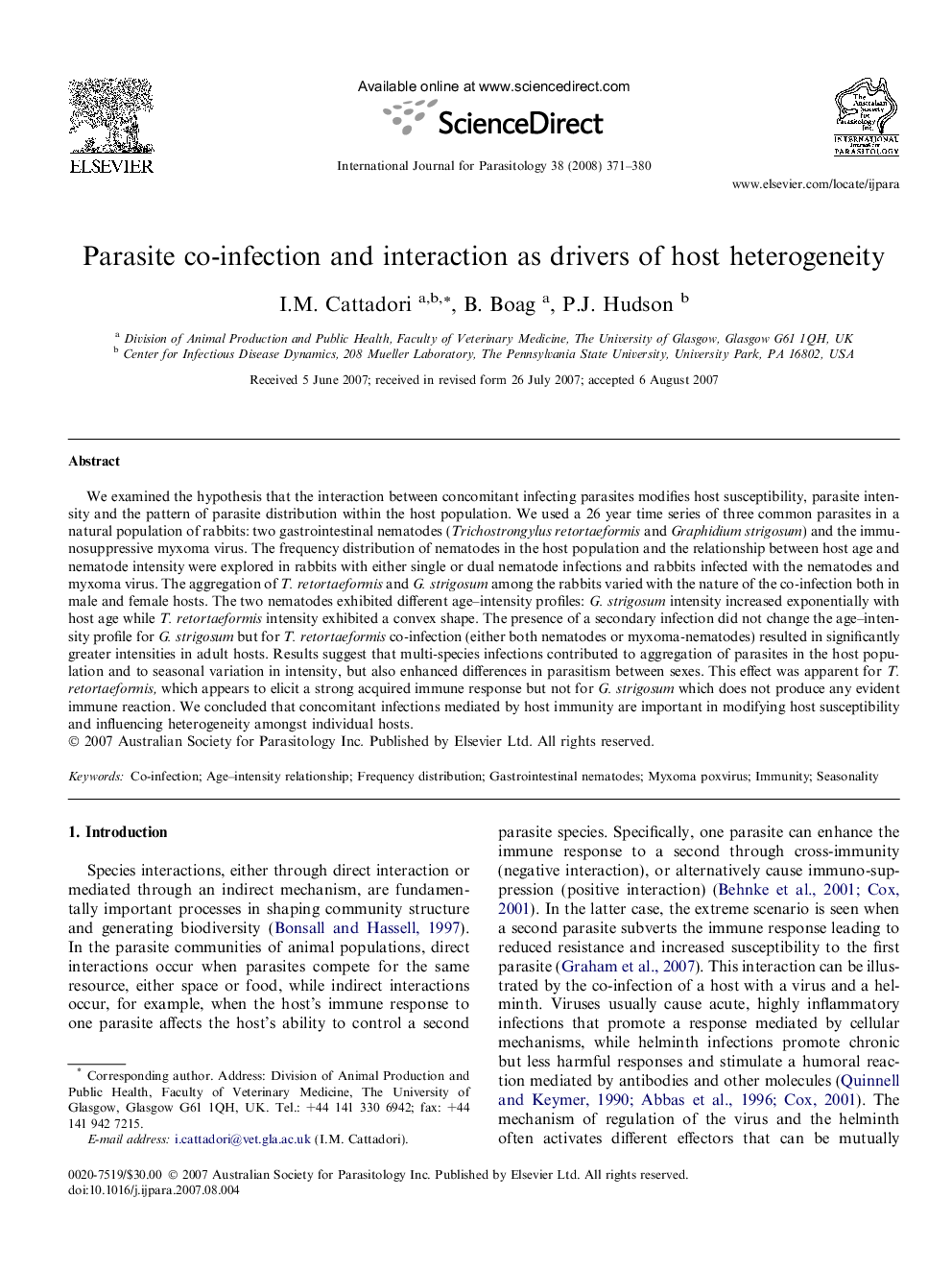| Article ID | Journal | Published Year | Pages | File Type |
|---|---|---|---|---|
| 8500338 | International Journal for Parasitology | 2008 | 10 Pages |
Abstract
We examined the hypothesis that the interaction between concomitant infecting parasites modifies host susceptibility, parasite intensity and the pattern of parasite distribution within the host population. We used a 26 year time series of three common parasites in a natural population of rabbits: two gastrointestinal nematodes (Trichostrongylus retortaeformis and Graphidium strigosum) and the immunosuppressive myxoma virus. The frequency distribution of nematodes in the host population and the relationship between host age and nematode intensity were explored in rabbits with either single or dual nematode infections and rabbits infected with the nematodes and myxoma virus. The aggregation of T. retortaeformis and G. strigosum among the rabbits varied with the nature of the co-infection both in male and female hosts. The two nematodes exhibited different age-intensity profiles: G. strigosum intensity increased exponentially with host age while T. retortaeformis intensity exhibited a convex shape. The presence of a secondary infection did not change the age-intensity profile for G. strigosum but for T. retortaeformis co-infection (either both nematodes or myxoma-nematodes) resulted in significantly greater intensities in adult hosts. Results suggest that multi-species infections contributed to aggregation of parasites in the host population and to seasonal variation in intensity, but also enhanced differences in parasitism between sexes. This effect was apparent for T. retortaeformis, which appears to elicit a strong acquired immune response but not for G. strigosum which does not produce any evident immune reaction. We concluded that concomitant infections mediated by host immunity are important in modifying host susceptibility and influencing heterogeneity amongst individual hosts.
Related Topics
Life Sciences
Immunology and Microbiology
Parasitology
Authors
I.M. Cattadori, B. Boag, P.J. Hudson,
